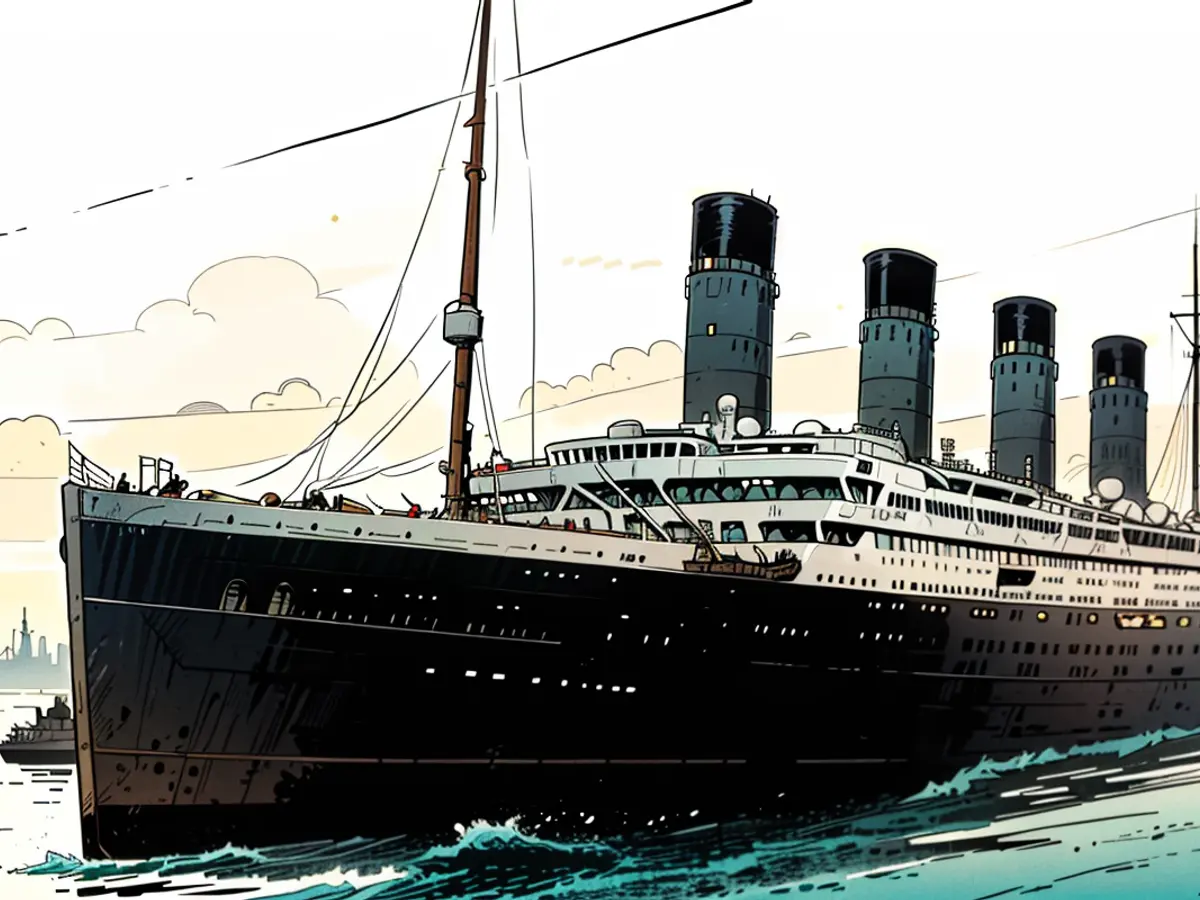- The Iconic Titanic is Breaking Down, Surprising Discovery Made by Scholars
The "Titanic" is relentlessly submerging into its watery grave, with the front part of the ship clearly captured in photos and videos from a recent dive to the wreck site in the North Atlantic. The front end of the luxurious ship that sank in 1912 has turned into a nearly symbolic sight, thanks to James Cameron's film "Titanic". Millions of viewers are familiar with the touching scenario of Rose (Kate Winslet) and Jack (Leonardo DiCaprio) with their arms outstretched at the bow of the ship, and Jack shouting, "I'm the king of the world" - right on the edge of the ocean liner. A large hole now opens wide on the starboard side of the ship.
The bow has lost a significant piece of its railing, measuring about 14.75 feet in length, as explained in a post on Reddit. For years, it served as a symbol of the "Titanic's" durability. The change in images serves as a stark reminder that the ship is indeed disintegrating. "After 112 years resting at the bottom of the North Atlantic, the harsh ocean environment is taking its toll," the company concluded.
Over Two Million Photos and Valuable Discoveries
More than two million pictures of the wreck were taken during the July and August expedition, which was the first conducted by the company since 2010. The ship, marketed as unsinkable at its launch, collided with an iceberg on its maiden voyage from Southampton to New York in 1912 and sank. Over 1,500 of the more than 2,200 people on board perished. The wreck was discovered in 1985, situated southeast of Canada's Newfoundland province at a depth of about 3,800 meters.
The wreck site serves as a rich depository for researchers. During the expedition, numerous artifacts were discovered, which the company plans to recover in future missions. Among them, researchers found delight in a 23.6-inch-high bronze statue of the Roman goddess Diana that once adorned a first-class lounge's mantelpiece.
As the ship sank, the cabin broke open, allowing the statue to be ejected. On the last day of the most recent dive, it was spotted and photographed in the debris field. Now, Diana's "delicate and elegant" features are visible for the first time in 112 years.
Researchers Worried About Decay
The slow decay of the wreck has been a concern for researchers for some time. Bacteria are breaking down the metal that the ship was built from, as reported by the company in 2010. According to the company based in Atlanta, Georgia, bacteria that eat into the ship's hull, rust, and ocean currents are contributing to the wreck's deterioration.
In the early 1990s, the company obtained the rights to manage the wreck site and has since organized several expeditions. Technological equipment, jewelry, coins, and other memorabilia have been recovered, restored, and partly exhibited.
Despite all efforts, the decay of the wreck is inevitable, the company states. This only further motivates researchers to document and preserve the evidence of the past before it's too late.
The discovery of numerous shipwrecks at the site has made it a rich depository for researchers, with the "Titanic" being just one of them. Over time, the harsh ocean environment has caused significant damage to these shipwrecks, leading to concerns about their preservation.






